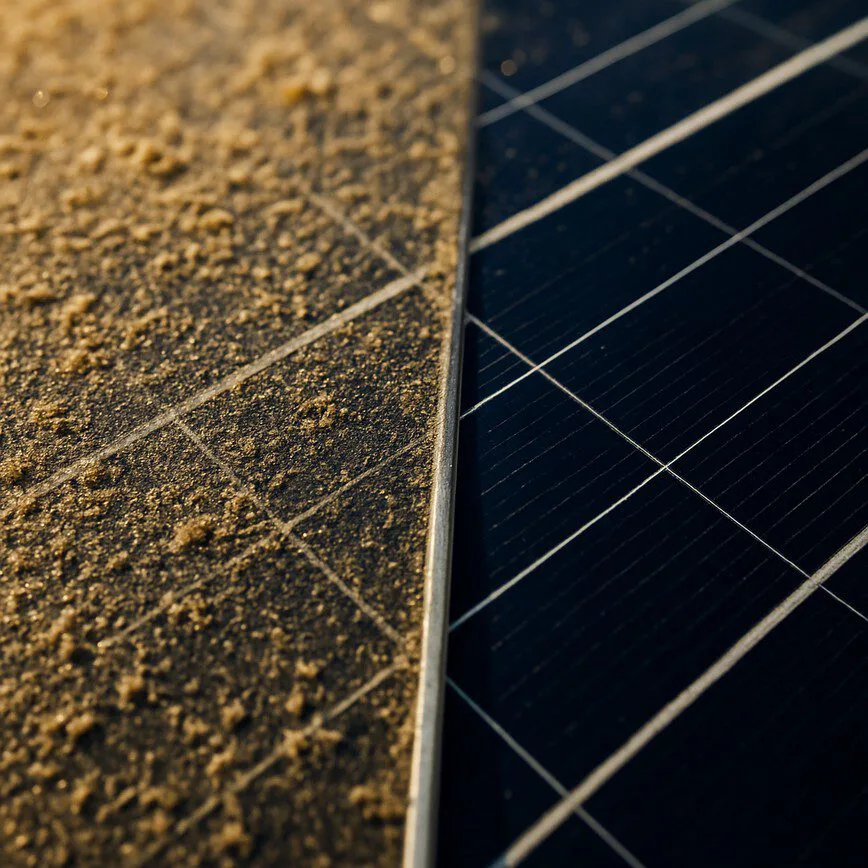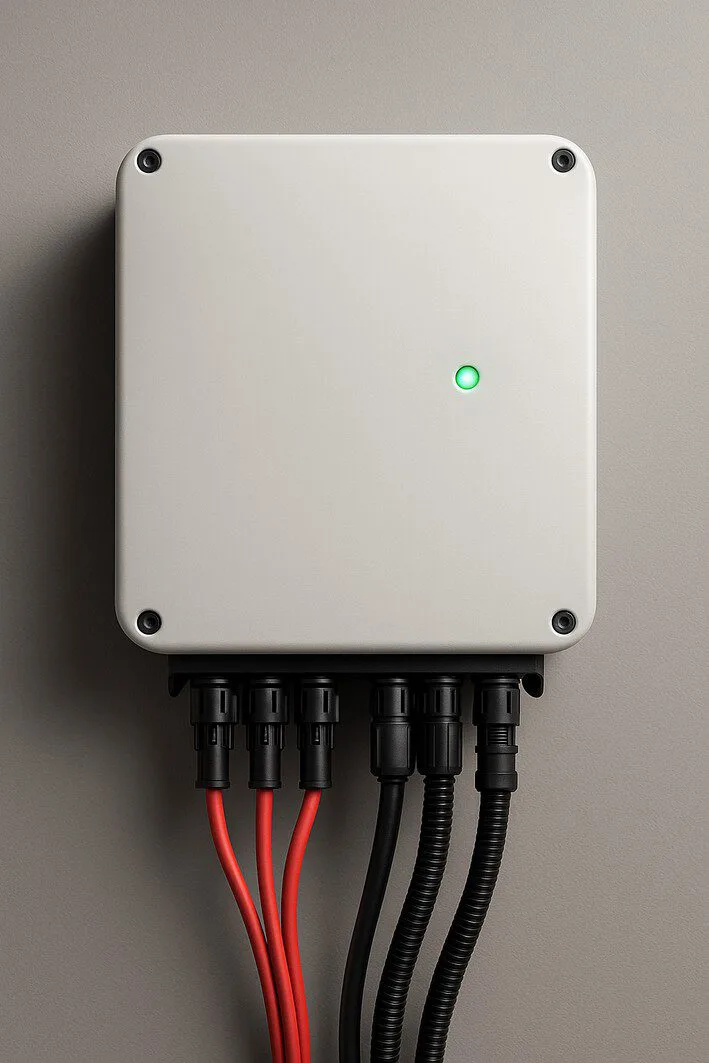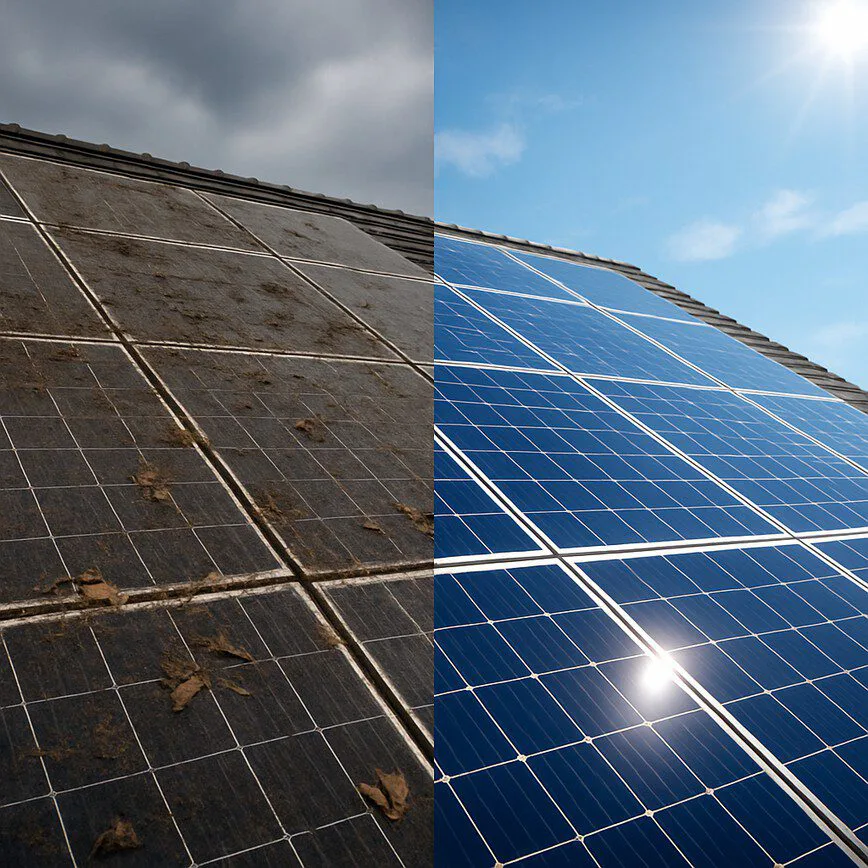If you have solar panels, you want to keep them running perfectly. While solar systems are famously low-maintenance, many owners mistakenly believe they are a “set it and forget it” technology. You’ve probably heard the term “solar preventive maintenance,” which refers to the practice of ensuring your home’s solar system operates efficiently and effectively for its entire lifespan.
Table of Contents
This guide breaks down everything you need to know about solar preventive maintenance, explaining what it is, what it includes, and why it’s a critical part of owning a solar energy system.
What is a PM Program for Solar Panels?
A preventive maintenance (PM) program for solar is like a regular health check-up for your solar energy system. Instead of waiting for something to break and then fixing it—which is called reactive maintenance—a PM program is all about being proactive. Reactive maintenance often involves system downtime, lost energy production, and emergency repair costs. A proactive approach avoids these headaches.
It’s a scheduled series of checks and services designed to catch small issues before they become big, expensive problems. Think of a slightly loose electrical connection that isn’t causing an immediate failure but is reducing efficiency. A PM check will find and tighten it, preventing potential arcing or component damage later. Just like changing the oil in your car keeps the engine healthy, a PM program keeps your solar investment generating maximum power and gives you peace of mind.
What’s Included in a Typical Solar Maintenance Check?
While specific plans can vary, most professional solar maintenance programs cover a few key areas. A skilled technician will perform a comprehensive evaluation of your entire system from the roof to the utility meter. A typical check-up boils down to three core activities:
1. Panel Cleaning and Inspection

Over time, your panels collect dirt, pollen, leaves, and bird droppings. This build-up, known as soiling, can block sunlight and reduce your system’s efficiency. Even a thin, seemingly transparent layer of dust can lower energy production. A PM visit includes professional cleaning using the correct tools to avoid scratching the glass. Beyond cleaning, the technician performs a detailed visual inspection for any physical issues like cracks, chips, delamination, or signs of water damage, which could compromise the panel’s integrity and safety.
2. Inverter and Wiring Checks

The inverter is the brain of your solar system, converting DC power from your panels into the AC power your home uses. It’s also the component most likely to experience issues. A technician will inspect the inverter for any error codes, ensure its cooling fans are clear of debris, and check all wiring connections. Due to daily temperature cycles, electrical connections can sometimes loosen over time. The technician will verify that all connections are secure and free from corrosion or wear and tear, as these issues can create electrical resistance, reduce power output, and even pose a safety risk.
3. Performance Monitoring and Analysis
A key part of a PM program is analyzing your system’s performance data. Technicians will compare your current energy output to its expected output based on historical weather data and the system’s age. If there’s a significant drop, they can investigate and diagnose the problem. This analysis can uncover subtle issues that aren’t visible to the naked eye—whether it’s a faulty panel, an inverter issue, or a new shading problem from a growing tree that you weren’t aware of. This data-driven approach ensures your system is truly optimized.
Why is Preventive Maintenance So Important?
Investing in a PM program directly protects your return on investment. While it may seem like an extra cost, it pays for itself by keeping your system running at its best. Here’s why it’s a smart move for any homeowner with a residential solar solution:
- Maximize Energy Production: A dirty or underperforming system simply doesn’t generate as much power. Regular cleaning and tune-ups ensure you are getting every possible kilowatt-hour from your panels. This translates directly into lower utility bills and a faster, more predictable return on your initial investment.
- Extend System Lifespan: Your solar panels are designed to last for 25 years or more, but the supporting components like the inverter and wiring need care to reach their maximum lifespan. Regular check-ups spot wear and tear early, preventing premature failure and ensuring you get decades of clean energy as promised.
- Prevent Costly Repairs: The most significant benefit is avoiding expensive, unexpected failures. Catching a loose wire, a corroded connection, or a failing inverter fan early is a minor fix. Letting it go can lead to a complete system shutdown, damage to expensive components, and a much larger repair bill down the line.
Making an Informed Decision with RenewGenius
At RenewGenius, our goal is to empower you with knowledge. Understanding the long-term value of your system is key, and that value is directly tied to its performance. This is why we provide tools like our ROI calculator to help you see the financial benefits from day one. A well-maintained system is what ensures you actually achieve that projected return.
A good maintenance strategy is a crucial part of that long-term value. By identifying potential issues before they escalate, you ensure your system operates at peak efficiency for years to come, protecting both your home and your finances. To learn more about the specific services involved, you can explore our detailed repair and maintenance solutions.
A solar preventive maintenance program is your best strategy for protecting your investment and ensuring a steady flow of clean, reliable energy for the life of your system.

